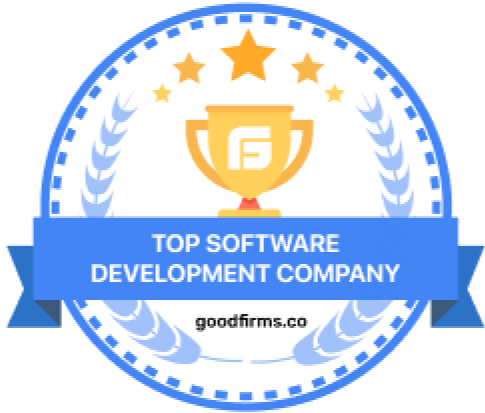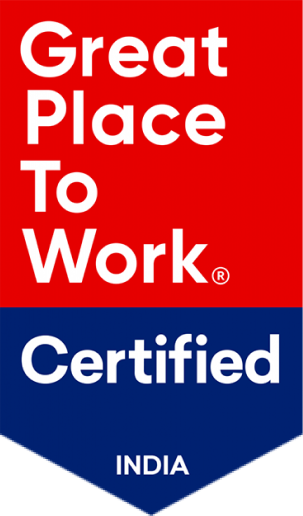The rapid evolution of digital commerce has made online marketplaces a cornerstone of the global economy. And since innovative marketplace technologies have revolutionized the way businesses establish and run platforms that will effortlessly bridge the gap between the buyer and seller, now is the time if you’re thinking of taking a shot at launching your online marketplace in 2025- you need more than an idea; you need the same solid understanding of your audience and robust technological infrastructure alongside the strategic approach to scale.
This guide will take you through all the things you need to know to build a successful online marketplace-enriched examples, use cases, and actionable insights to help you succeed through the competitive landscape in 2025.
Online Marketplace: An Overview
Online Marketplace is a digital platform with several vendors offering goods and/or services to its customers. The marketplace operator mediates between the sellers and customers. Unlike standalone e-commerce stores, marketplaces bring together various sellers under a single virtual roof for transactions, besides providing further tools like product listings, payment gateways, and customer support.
Key Characteristics of Online Marketplaces
- Multi-Vendor Environment: Multiple sellers are offering a diverse range of products or services.
- Centralized Operations: The website has managed logistics, payment services, and user interaction.
- Ease of Access: Buyers can compare options, read reviews, and make an informed purchasing decision.
- Trust and Transparency: The rating, review, and safe payment services give user confidence.
Case Study: Amazon
Amazon exemplifies the success of an online marketplace. From a modest online bookstore, it evolved into a global retail giant, offering millions of products across diverse categories. Its success lies in leveraging advanced backend systems, optimizing logistics, and continuously enhancing the user experience.
Why Online Marketplaces Matter in 2025?
Online marketplace is much more than just platforms; they are an ecosystem that redesigns how businesses and consumers interact. Their growing importance is driven by technological changes, changes in consumer behavior, and increased demand for convenience.
Economic and Social Benefits:
- Global Connectivity: Platforms eliminate geographical barriers as businesses tap into international markets.
- Economic Empowerment: SMEs can thrive with minimal overhead costs.
- Consumer-Centric Solutions: Advanced marketplace technologies make shopping experiences easier, faster, and more personalized.
- Sustainability: Marketplace practices focused on environmental friendliness aid in conscious consumerism.
Real-time Example: Etsy
Etsy is one of the few marketplaces that has a niche for handmade and vintage items, which empowers creative entrepreneurs while appealing to consumers seeking unique, sustainable products. Through maintaining a strong sense of community, Etsy exemplifies how niche marketplaces can compete with industry leaders.
Building an Online Marketplace
Step 1: Defining Your Marketplace Niche
The choice of the right niche is foundational to the success of your marketplace. A well-defined niche allows you to target specific audiences, address their unique needs, and stand out from competitors.
How to Choose the Perfect Niche?
- Conduct Market Research: Identify underserved markets or emerging trends.
- Leverage Personal Expertise: A marketplace based on your knowledge or interests can create authenticity.
- Evaluate Demand and Profitability: Use tools like Google Trends or SEMrush to assess market potential.
- Analyze Competitors: Study existing players to understand what works and identify gaps you can fill.
Emerging Niches in 2025:
- Eco-Friendly Goods: A platform for sustainable products like reusable household items or ethical fashion.
- Professional Services: Connecting businesses with freelancers or specialized professionals.
- Secondhand Technology: A marketplace for refurbished gadgets and electronics.
Case Study: Airbnb
Airbnb has been the most disruptive company in the travel industry, focusing on unique accommodations and authentic travel experiences. It identified a gap between traditional hotels and budget-conscious travelers and carved out a niche that has grown into a global phenomenon.
Step 2: Choosing a Business Model
Your business model determines how your marketplace will generate revenue and sustain itself. A strategic choice ensures both profitability and scalability.
Popular Business Models:
- Commission-based: There will be a percentage on every sale taken by the marketplace.
- Subscription-based: This refers to the fee, mostly paid by the buyer, to access the site with the vendors.
- Listing fee: The sellers have to pay for listing their products.
- Freemium: Provides free basic features, charges to use advanced tools, and premium services.
Innovative Approaches
Hybrid models, such as subscription commissions, are becoming popular. Subscription fees for basic access plus a commission on high-value transactions can be paid by the vendors.
Pro Tip
Align your model according to the expectations of the audience and the long-term goals of your platform. Subscriptions may work well in niche platforms, while commission-based models work well in high-volume marketplaces.
Step 3: Building a Technology Stack
The backbone of any successful online marketplace app is a robust and scalable technology stack. Your platform must deliver a seamless experience while being secure, fast, and adaptable.
Essential Components:
- Frontend Development: Frameworks like React.js and Vue.js ensure responsive, intuitive interfaces.
- Backend Infrastructure: Serverless platforms like AWS Lambda or Google Cloud Functions enable scalability.
- Payment Gateways: Integrate options like Stripe, PayPal, and local solutions to support global transactions.
- Database Management: MySQL or MongoDB for fast and reliable data storage.
- Mobile Optimization: Since mobile commerce is the future, responsive design and app development should be the priority.
Emerging Technologies
- Blockchain: It adds transparency and security to transactions.
- AI and Machine Learning: It enables predictive analytics, fraud detection, and personalized recommendations.
- AR/VR: It changes the user experience with features like virtual try-ons.
Real-time Example: Shopify
Shopify offers businesses tools to build scalable marketplaces-from secure hosting to advanced analytics and payment systems.
Step 4: Improved User Experience (UX)
Improving user experience is important in making or breaking a online marketplace app. A user-friendly interface encourages engagement, earns the trust of users, and drives conversions.
Main UX Features:
- Easy Navigation: Use simple menus and intuitive search filters to make searching for what the user needs quickly easy.
- Personalization: Personalize products or services suggested by AI-driven algorithms from the user’s preferences
- Trust Signals: Add verification for reviews, secure payments, and detailed seller profiles.
- Mobile Optimization: Design for seamless functionality across all devices.
- Fast Loading Times: Optimize performance to ensure pages load within 2-3 seconds.
Case Study: Uber
Uber’s intuitive app design is a great example of great UX. From real-time tracking of drivers to cashless payments, the platform makes it easy and transparent for the user.
Step 5: Launching a Minimum Viable Product (MVP)
An MVP is an underpowered version of your platform that addresses core functionalities; you could test your idea with as little investment as possible.
Key Features to Include:
- User Registration: A quick onboarding for buyers and sellers.
- Basic Listings: This should enable vendors to upload their products or services and their management.
- Secure Payment Integration: Ensure transactions are smooth and secure.
- Feedback System: Create ratings and reviews to facilitate trust.
Advantages of an MVP:
- Cost-Efficiency: Launch with fewer resources while collecting user feedback.
- Market Validation: Confirm the demand and usability before scaling.
- Iterative Development: Iterate and refine your platform using actual user feedback.
Real-time Example: Airbnb MVP
Airbnb began as a simple website to host lists and for travelers to find accommodations. Simplicity helped validate the concept without investing in heavy features.
Step 6: SEO and Discoverability Optimization
As you build your online marketplace, making sure that people can find it is very important. SEO will play a very important role in making sure that your marketplace appears on the first page of the search results, driving organic traffic, and ensuring long-term success.
Importance of SEO for Marketplaces:
Search engine visibility is a key driver of attracting sellers and buyers to your marketplace. Without the right SEO, even the most robust marketplace will struggle to gain traction.
- Content Optimization: High-quality, relevant content for your marketplace is vital to ranking high in the search engines. Relevant blogs, buyer’s guides, and FAQs, tailored to the specific needs of the target audience, will increase organic traffic. Such content would include the right keywords- “how to build a marketplace app” and “online marketplace apps.”
- Product Listings: Every product or service listed on your marketplace should be optimized for search. This includes clear, concise titles, detailed descriptions, relevant tags, and high-quality images. The search engines also look at unique content, so avoid duplication of descriptions across listings.
- Mobile Optimization: With most users checking online marketplaces on smartphones, mobile optimization has become one of the critical ranking factors. Make sure that your marketplace is mobile-friendly with fast load times and great user experience on all platforms.
- Backlink Building: In addition to on-page SEO, you’ll need to focus on building high-quality backlinks from reputable sources in your industry. This could include collaborations with influencers or partnerships with authoritative websites.
SEO Best Practices:
- Long-Tail Keywords: Use specific, less competitive keywords (e.g., “how to build an online marketplace for niche products”) to attract more targeted traffic.
- On-page SEO: Include optimization of titles, headers, and meta descriptions on each marketplace page. Your website structure should be logical, clear, and crawl-friendly.
- User Reviews and Ratings: An effective review and rating system for products and sellers fosters trust with users. It also adds new content to your platform prime requirement of search engines and is a highly sought-after feature by users.
Real-time Example: Etsy’s SEO Strategy
Etsy’s marketplace depends greatly on search engine visibility. The platform optimizes listings with detailed product descriptions, relevant tags, and keywords to ensure sellers’ products appear in search results. Moreover, Etsy uses user-generated content, such as reviews and Q&A sections, to continuously refresh its listings and improve discoverability.
Pro Tip
Monitor your SEO strategy regularly and update your platform with the latest search engine algorithm changes because SEO trends and rules are changing fast.
Step 7: Customer Support and Community Building
Customer support and community building can either make or break your online marketplace. By creating trust, providing excellent customer service, and building a loyal community, you can ensure long-term retention and repeat business.
Building Strong Customer Support Systems:
- Multichannel Support: Your customers should be able to get hold of you through a number of channels, such as emails, live chat, social media, or even a phone hotline. Timely responses are also essential because delays can end up in negative reviews.
- Self-Help Tools: An FAQ page or a help center where most questions are answered by users themselves can save time both for your support team and users.
- 24/7 Support: If you are targeting international customers, you can implement 24/7 support. This can be supported by automated chatbots responding to frequent questions, or it can be escalated further to human agents for complex matters.
- Proactive Customer Service: You can contact a customer to ensure that they’re having a good experience. If a customer has purchased your product or completed a transaction, you can send emails to confirm satisfaction or elicit feedback.
Building a Community Behind Your Online Marketplace App:
- Social Media Interactions: Create an interesting presence on Instagram, Facebook, and LinkedIn. Ensure that the content that pops up here is all pertaining to your marketplace, pushing user stories, and then make sure to answer your public’s questions.
- Online Forums and Discussion Boards: Allowing users to converse on the platform. The better knowledge will be transferred along with community building.
- Loyalty Programs: Reward frequent users or top-rated vendors with special promotions, discounts, or even features.
- User Reviews: Get buyers to leave reviews and ratings. Positive reviews would build trust with new users, and feedback will help improve your platform.
Real-World Example: eBay’s Efforts to Build a Community
eBay has built a strong community of buyers, sellers, and collectors through its forums and seller-focused resources. They encourage community-building by fostering trust with reviews, ratings, and educational resources for sellers. Their customer support system is multi-faceted and readily accessible.
Step 8: Logistics and Delivery Systems
A smooth delivery process is vital for building trust and ensuring satisfaction in your marketplace. If products arrive late or are damaged, customers do not come back.
Integrate Logistics and Delivery Solutions:
- Third-Party Logistics Providers: In most successful marketplaces, third-party logistics (3PL) providers handle warehousing, packaging, and shipping. Such partners ensure fast and reliable delivery, especially when operating in a global environment.
- In-House Logistics Solutions: If you’re looking to manage your logistics in-house, your system has to be integrated well into your marketplace. This should be real-time inventory management and access to efficient tracking systems.
- Transparency in Shipping Information: Ensure that the shipping information given by your platform is transparent and accurate to include shipping costs, expected times of delivery, and shipping numbers. You should present various shipping options to provide flexibility for your customers.
- International Shipping: In the case of global customer targeting, one should come up with international shipping solutions including currency conversion, managing customs, and offering varied shipping options to cope with international demands.
Real-time Example: Alibaba’s Global Logistics Operations
Alibaba’s logistics operation through Cainiao offers customers a complete shipping solution for sending their products anywhere around the world. The system combines tracking and efficient handling of customs procedures with a multiple shipping method for giving a reliable delivery experience to customers.
Step 9: Regular Platform Maintenance and Updates
Building an online marketplace app is a long-term commitment. Once you’ve launched your marketplace, it’s essential to continuously improve and update the platform to maintain user satisfaction, adapt to market trends, and improve security.
Ongoing Platform Maintenance:
- Security Updates: Regularly update security patches to protect your platform from potential cyber threats.
- Bug Fixes: Always ensure your platform is free from bugs or performance issues that might degrade the user experience.
- Feature Updates: Periodically introduce new features based on user feedback or emerging market trends. This helps you stay competitive and relevant in the marketplace.
- Backend Optimization: Optimize backend performance, such as database management, server capacity, and response times, to handle increasing traffic and transactions.
Pro Tip
Ensure you have a specific team or third-party service, dedicated to platform maintenance, and thereby the system is operational 24/7.
Conclusion
Creating an online marketplace app in 2025 requires careful planning, cutting-edge technology, and continuous growth. By understanding the principles behind marketplace technology and platform development, you can build a competitive, scalable, and user-centric platform. Start with a niche, choose the right business model, ensure smooth payment and logistics processes, and continuously innovate to meet customer demands.
With the right approach, you can create a successful online marketplace that thrives in the fast-paced world of digital commerce. From defining your niche to optimizing SEO and implementing robust customer support systems, every step of the process is an opportunity to make your marketplace a success.
If you are planning to get started with building an online marketplace, we are here to help you. You can speak to us and we will assist you.

Start a Project with Ajackus






















